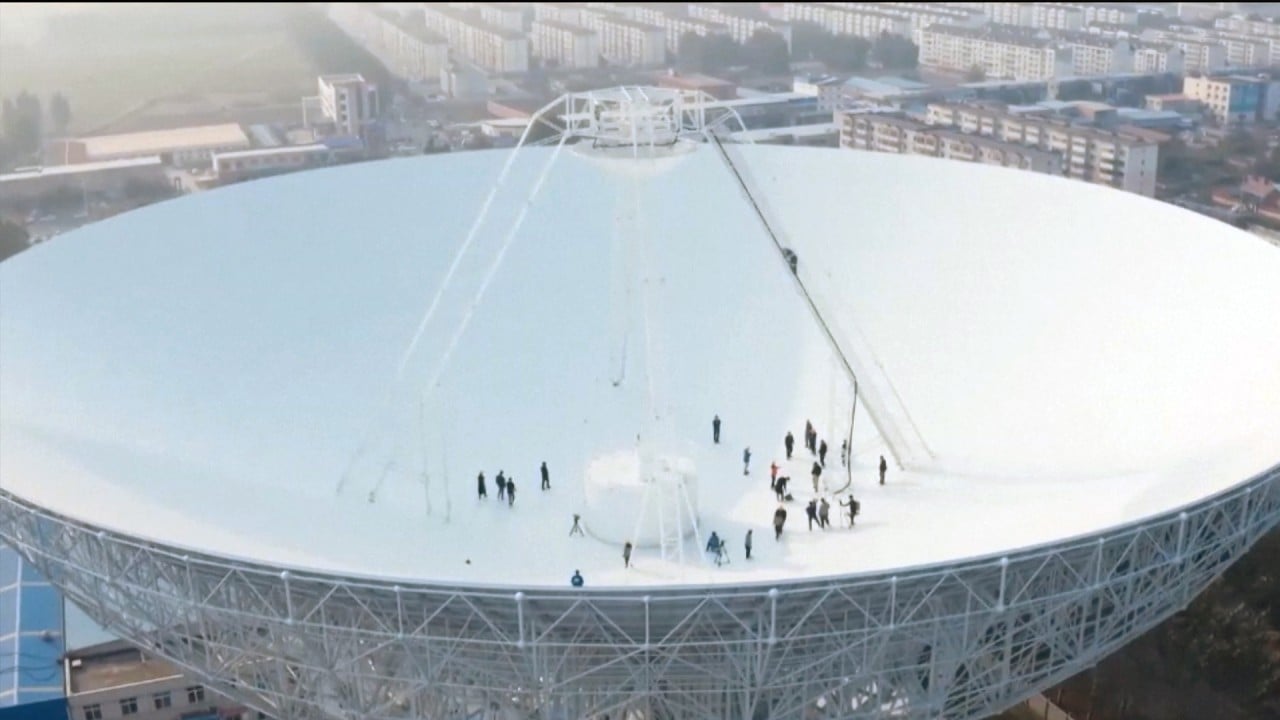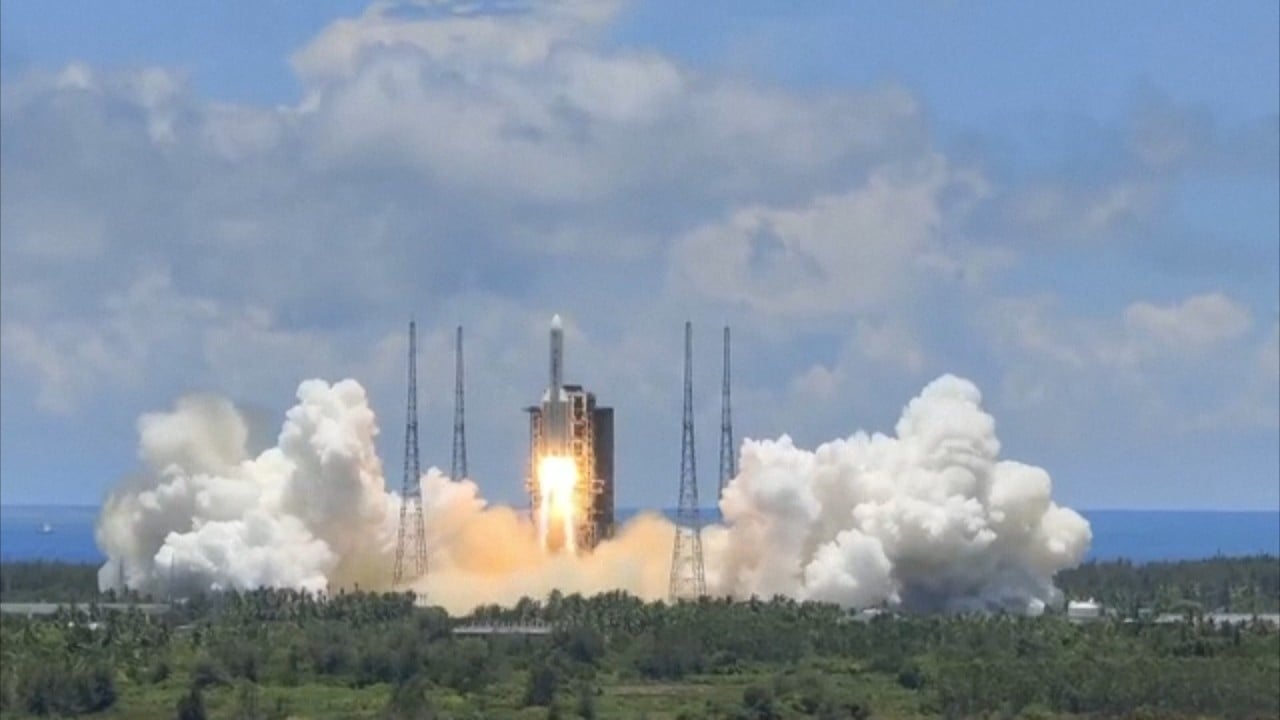[ad_1]
Over the next couple of months, Tianwen will circle Mars and collect information about the environment below.
A lander is expected to separate from the orbiter around May to make a soft landing on Utopia Planitia, a large, rock-littered plain.
The lander has a robotic rover that will roam the landscape, investigating a wide range of features from soil properties to material composition, water, ice, air quality and magnetic fields, according to the Chinese space authorities.

02:10
China readies massive antenna as Tianwen-1 Mars mission nears orbit around red planet
For a first-timer, this is a complex mission.
Only the United States and the former Soviet Union have managed to land spacecraft on Mars, and these manoeuvres were preceded by many fly-by or orbiting missions.
Since the former Soviet Union’s Mars 1M No 1 mission on October 10, 1960, nearly 50 attempts have been made to visit the planet and about half have failed.
Ken MacTaggart, Britain-based space historian and author of the Haynes Astronaut Manual, said the Tianwen’s orbit insertion might seem simple but was no easy task.
With a time delay of 10 minutes between Earth and Mars, the Tianwen would need to fire up its engines while out of radio contact with the controllers in Beijing.
“All commands and control sequences need to be thoroughly checked to eliminate any errors, and then sent to the spacecraft well in advance,” said MacTaggart, who is co-editor of the Apollo 11 Flight Journal for Nasa’s history division.
He said that to “brake” the Tianwen would need to turn so its rocket engine faced the direction of travel, then pressurise the fuel tanks and start the engine.
“All of these complicated events need to happen in the correct time sequence. If the engine firing happens late, or the burn time is short, Tianwen 1 will sail past Mars into a wide orbit around the sun,” MacTaggart said.
“Entering orbit around Mars, with no possibility of help from Earth if anything goes wrong, is an extremely challenging task. Mars probes from other nations have often failed at this step, and a very expensive American Mars probe exploded when pressurising its fuel system before ignition.”
The US remains the lead player on Mars.
It has launched more than 20 missions to the planet, two involving rovers. The projects greatly expanded knowledge of Mars, including the Spirit rover mission’s 2004 discovery of evidence of water.
China’s space technology has been catching up rapidly in recent years. China made the world’s first landing at the far side of the moon and brought back lunar samples at the end of last year. The success of these missions suggested that China had acquired the critical technology for deep space missions, which depend heavily on autonomous software and hardware, according to some space experts.

01:48
China launches mission to Mars with lift-off of home-grown Tianwen-1 spacecraft
A Beijing-based space scientist said China had also learned a lesson from the Soviet Union and would not engage in a costly space race with the US for political reasons.
“Chinese are pragmatic. There may be an allure to race to the moon or Mars. But we stick to our own pace,” said the government researcher who requested not to be named due to media policy.
The Tianwen 1 is the first of a series of spacecraft that China plans to launch to explore the other planets in the solar system. While the US is looking at manned space missions to the moon and Mars, China is opting for robot missions because of concerns about costs and risks, according to the researcher.
But Chinese astronauts will be working on the country’s first space station, with construction expected to start this year in lower-Earth orbit.
“It will be an extremely busy year for Chinese space programme,” the researcher said.
[ad_2]
Source link